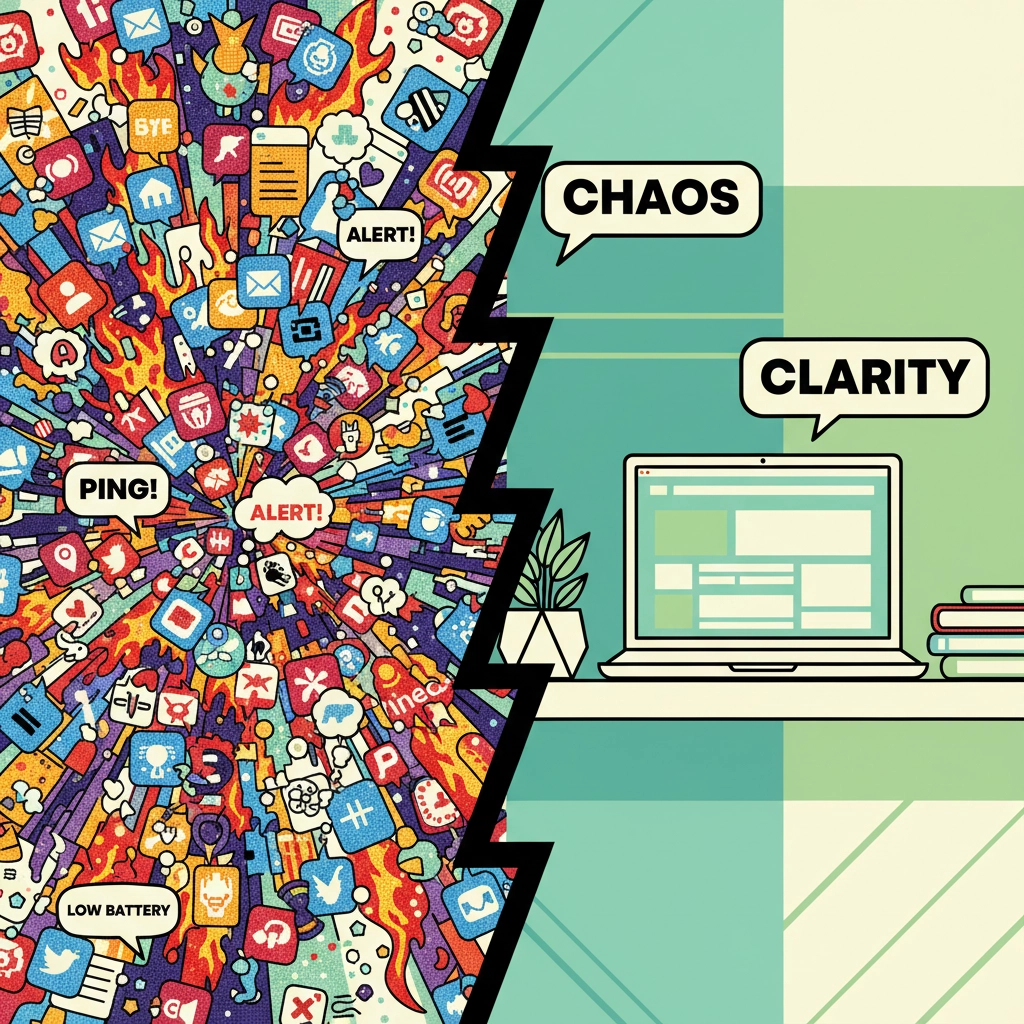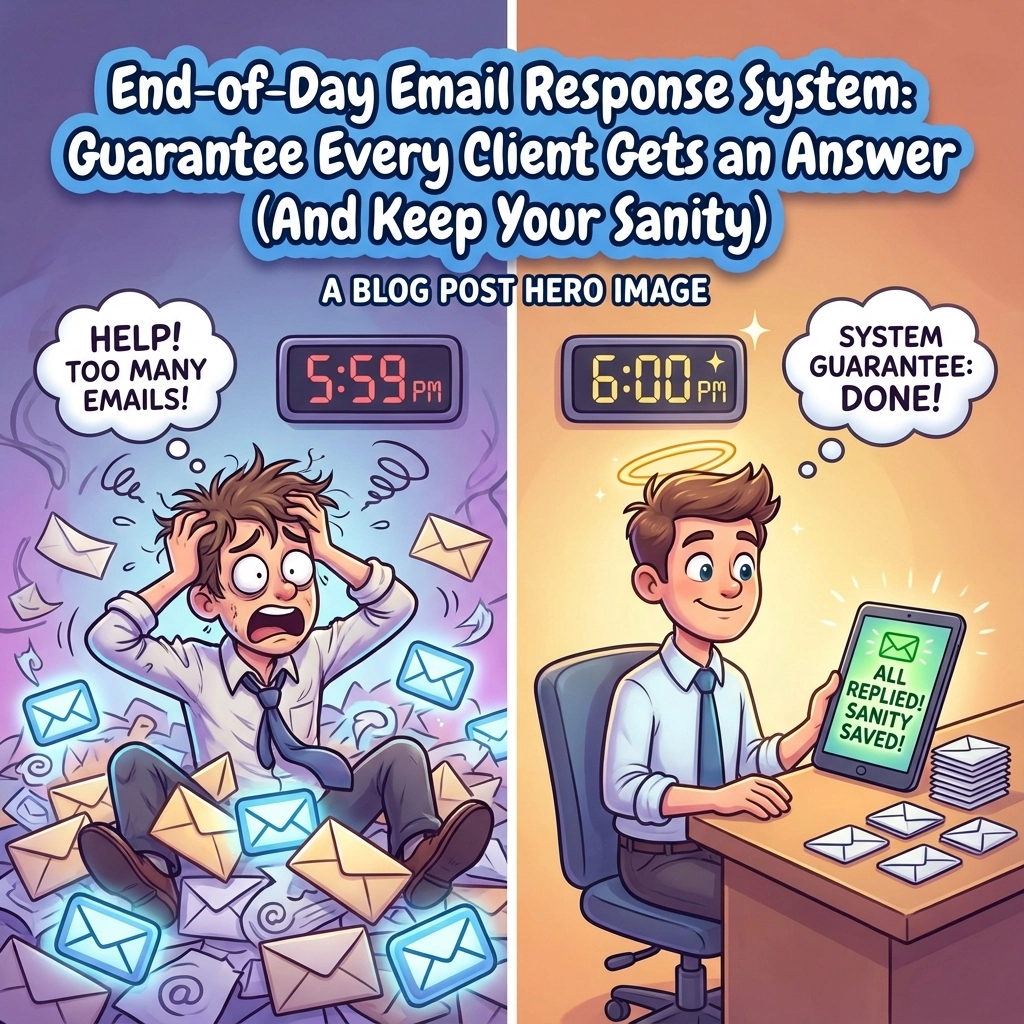Your heart races as you read the headline: “URGENT: Your computer is infected! Download this security software NOW!” Without thinking, you click. Or maybe you’re scrolling through social media when that shiny new gadget catches your eye: suddenly you need it. Sound familiar?
We’ve all been there. Technology decisions driven by emotion rather than logic are everywhere, and they’re costing us more than we realize. From impulse purchases to ignoring critical security updates, letting feelings drive your tech choices is a recipe for disaster.
The Emotional Tech Decision Trap
Technology companies know exactly how to push your buttons. They’ve spent billions studying human psychology to trigger specific emotional responses that bypass your rational thinking.
Fear-Based Decisions
That pop-up warning about your “infected” computer? It’s designed to create panic. When you’re scared, you don’t think clearly: you just want the fear to stop. This leads to downloading malicious software, paying for unnecessary services, or making hasty decisions about legitimate security needs.
Status-Driven Purchases
The latest iPhone just dropped, and suddenly your perfectly functional phone feels ancient. Social pressure and status anxiety drive countless unnecessary upgrades. Meanwhile, the features you actually use haven’t changed much, but your bank account certainly has.
Attachment to Outdated Systems
On the flip side, emotional attachment can keep you stuck with technology that’s actively hurting your business. Maybe you’ve used the same software for years and feel comfortable with it, even though it’s creating security vulnerabilities or inefficiencies. Change feels scary, so you avoid it.
Frustration-Based Decisions
When technology doesn’t cooperate — the printer jams again, the app crashes mid-task, or your email stops syncing — frustration takes over. Instead of troubleshooting or seeking help, you might impulsively buy a replacement, download a random “fix tool,” or switch providers in a fit of annoyance.
These decisions are emotional pressure valves, not rational solutions, and they often create new problems while failing to solve the original one.
We’ve seen it happen often — smart people making poor tech calls simply because they’re frustrated. That emotional release feels productive in the moment but usually adds more chaos later.

The Real Costs of Emotional Tech Decisions
Decision Fatigue Makes Everything Worse
The constant mental energy required to manage digital choices leaves you exhausted and prone to poor decisions. When you’re overwhelmed by options, you either make impulsive choices or stick with familiar (but potentially problematic) solutions simply because evaluating alternatives feels impossible.
Security Takes a Backseat
Emotional decisions often ignore security implications entirely. That free app that seems perfect for your needs? You download it without checking permissions or reading reviews. That urgent security update that keeps popping up? You dismiss it because it’s interrupting your workflow.
Technology Overload
Impulse-driven tech adoption creates digital clutter. Your phone becomes a graveyard of apps you used once, your computer slows down from unnecessary software, and your monthly subscriptions multiply like rabbits. Each addition seemed logical in the moment, but collectively they’re draining your resources and attention.
How AI Exploits Your Emotions
Modern AI systems are particularly skilled at identifying and manipulating emotional vulnerabilities. Generative AI can create targeted phishing scams that perfectly mimic trusted entities while appealing to emotions like fear or urgency.
Deepfakes use shock value or false trust to spread misinformation. Marketing algorithms subtly manipulate purchasing decisions by creating artificial scarcity (“Only 3 left!”) or appealing to status desires. These tactics deliberately bypass logical thinking to hook you on instinctual, emotion-driven reactions.
When you consistently rely on AI recommendations without questioning them, you gradually lose the ability to think critically about technology choices. The convenience becomes a crutch that weakens your decision-making muscles.

Real-World (Anonymized) Examples
Example 1 — Panic Purchase
A small business owner once emailed to say they installed an expensive “system-cleaner and antivirus” after a dramatic popup. The software turned out to be a scam; the real cost was lost time, data exposure, and paying for cleanup. The emotional trigger (panic) removed any normal vetting.
Example 2 — Comfort Holds You Back
Another organization clung to a legacy CRM because staff were emotionally attached to routines and short-term comfort. Over time this choice created security gaps, manual workarounds, and hidden costs that far exceeded the pain of switching.
These are typical — and intentionally anonymized — stories that show the same two themes: emotional speed (panic/greed) and emotional stickiness (comfort/attachment). Both lead to suboptimal outcomes.
Example 3 — The DIY Disaster
In one company, a department manager got frustrated waiting for IT to approve a new cloud tool and decided to buy it themselves using a corporate card. It seemed faster at first — until integration issues started breaking workflows. The tool didn’t meet compliance standards, stored client data overseas, and conflicted with existing systems. IT eventually had to untangle everything, migrate data back, and negotiate with the vendor to cancel the rogue subscription. What was meant to “save time” ended up costing weeks of cleanup, unexpected fees, and staff downtime.
These are typical — and intentionally anonymized — stories that show the same three themes: emotional speed (panic or frustration), emotional stickiness (comfort), and emotional overreach (DIY impulse). All lead to wasted time, higher costs, and preventable chaos.
Making Smarter Technology Choices
Start With Your Actual Needs
Before any technology decision, ask yourself: “What specific problem am I trying to solve?” Not “What looks cool?” or “What will impress people?” but what genuine need exists in your work or personal life.
Create a simple criteria checklist:
- Does this solve a real problem I have?
- Will this integrate with my existing systems?
- Can I afford the true total cost (including time, training, ongoing fees)?
- What are the security implications?
- What happens if this technology fails or disappears?
Recognize Emotional Triggers
Learn to identify when your emotions are being manipulated. Urgent language, limited-time offers, fear-based messaging, and social pressure are all red flags. When you feel a strong emotional response to a technology pitch, that’s your cue to pause and think rationally.
Get Expert Input
Emotional decisions often ignore expert advice because feelings seem more compelling than facts. When making significant technology choices, consult with people who understand the technical implications: not just the marketing promises.

Quick Decision Tools
Below are short, repeatable tools you can apply right away.
Decision Matrix (1–5 scoring)
Score each option on: Problem fit, Integration, Total cost, Security, Resilience. Add scores to compare objectively. A strong candidate should score consistently, not have one spectacular score and several near-zeroes.
AI Recommendation Checklist
- Verify the source of the recommendation (who trained the model, and is that source reputable?).
- Sanity-check outputs by asking a simple clarifying question or for sources.
- Cross-check with documentation, vendor specs, or an expert.
- Test on a small, contained pilot before full rollout.
- Don’t rely on a single AI-generated verdict for high-risk choices.
Procurement Rules of Thumb
- Require security sign-off for any tool that touches sensitive data.
- Use a two-step approval process for purchases above a set threshold (e.g., $1,000).
- Mandate a pilot or trial period before committing to recurring payments.
- Keep a vendor comparison log that documents why one vendor was chosen over another.
The Business Impact of Rational Tech Decisions
For business owners, emotional technology decisions can be particularly costly. Panic-driven vendor switches disrupt workflows and waste resources. Attachment to outdated systems creates security vulnerabilities and inefficiencies. Status-driven purchases drain budgets without delivering real value.
Rational technology decisions, on the other hand, create:
- Better Security: Choosing solutions based on actual security needs rather than fear or convenience
- Cost Efficiency: Investing in technology that delivers measurable value rather than impressive features
- Operational Stability: Making changes based on strategic planning rather than emotional reactions
- Scalable Growth: Building technology infrastructure that supports long-term goals
A Framework for Emotional Regulation
The 24-Hour Rule
For any significant technology decision, institute a 24-hour waiting period. This simple delay allows emotional intensity to fade and rational thinking to return. Most “urgent” technology decisions aren’t actually urgent.
Document Your Reasoning
Write down why you’re considering a technology change. Include both the problem you’re solving and the criteria you’re using to evaluate solutions. This process forces you to think beyond emotional impulses.
Test Before Committing
Whenever possible, try before you buy. Use free trials, pilot programs, or small-scale implementations to evaluate technology based on actual performance rather than marketing promises.
Regular Technology Audits
Periodically review your technology stack with fresh eyes. Which tools are you using because they genuinely add value, and which are you keeping out of habit or emotional attachment?

Training & Team Processes
Emotionally driven tech choices scale quickly when teams aren’t aligned. Put simple processes in place to reduce individual impulse buys and fear-based reactions:
- Procurement Policy: A short written policy that spells out approval steps, spend limits, and security checks.
- Role-Based Approvals: Give purchasing authority to specific roles and require technical sign-off for security-sensitive buys.
- Incident Playbooks: When staff receive scary alerts (popups, urgent emails), train them to follow a playbook: don’t click, verify sender, escalate to IT.
- Regular Training: Short quarterly refreshers on phishing, social engineering, and recognizing marketing triggers.
When Professional Help Makes Sense
Sometimes the smartest emotional regulation strategy is admitting you need objective input. Managed service providers can offer the technical expertise and emotional distance necessary to make sound technology decisions.
Professional IT support helps by:
- Providing objective analysis of your actual technology needs
- Identifying security risks you might overlook due to emotional attachment
- Offering strategic guidance that goes beyond vendor sales pitches
- Implementing changes systematically rather than reactively
When Emotions Help (Yes, Sometimes They Do)
We don’t want to throw out intuition altogether. Emotions can be useful — for example, gut reactions can surface overlooked concerns or ethical considerations. The trick is to use emotions as a signal, not a decision. If your gut flags something, document why and subject it to the same evidence-based checks as any other concern.
Practical Closing: A Simple Workflow
Here’s a three-step routine you can use immediately:
- Pause — If you feel an emotional jolt (fear, excitement, social pressure), stop.
- Document — Write the problem, the proposed solution, and score it with the Decision Matrix.
- Validate — Run a 24-hour hold, consult an expert (or MSP), and pilot before committing.
The Bottom Line
Technology should serve your goals, not your emotions. The companies creating these products have teams of psychologists working to trigger emotional responses that benefit them, not you. Your defense is recognizing these tactics and developing systems for making rational, criteria-based decisions.
Every time you pause to think critically about a technology choice, you’re taking back control from the algorithms and marketing teams trying to manipulate your emotions. You’re choosing efficiency over impulse, security over convenience, and long-term value over short-term emotional satisfaction.
The next time you feel that emotional pull toward a shiny new tech solution or away from a necessary change, remember: the best technology decisions are boring. They’re based on facts, needs, and careful analysis: not feelings. Your future self (and your bank account) will thank you for the restraint.
Share this:
- Click to share on Facebook (Opens in new window) Facebook
- Click to share on Tumblr (Opens in new window) Tumblr
- Click to share on X (Opens in new window) X
- Click to share on Pocket (Opens in new window) Pocket
- Click to share on Pinterest (Opens in new window) Pinterest
- Click to share on LinkedIn (Opens in new window) LinkedIn




